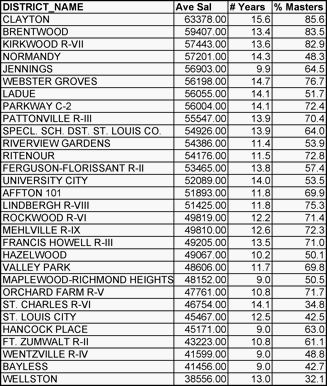Physics for freshmen
Dr. Leon Lederman, 1988 winner of Nobel Prize in Physics discusses teaching physics first
The St. Louis Post-Dispatch ran an article about the Missouri Physics First program, which encourages and trains high school science teachers to teach an introductory, hands-on physics course for freshmen.
❝Physics drives chemistry and biology," said Sara Torres, director of a program at the University of Missouri in Columbia that trains future ninth-grade physics teachers. "To understand chemistry, you need physics, and to understand biology, you need chemistry. So it makes sense to teach physics to ninth-graders.❞
The counter-arguement is that students need to use higher-level math to understand physics.
❝Those students don't have a sound enough basis in math skills," said Gwen Thomas, the secondary science curriculum coordinator for St. Louis Public Schools.❞
Since the intro course wouldn't replace a higher-level math-based physics course that many to most (depending on the district) students wouldn't take anyway, I love the idea of an introductory physics course for all students. This would help them see a need for that algebra they're learning, expose them to an area of science they might not see otherwise and help them better understand other branches of science.
Rock and roll the Mother Nature way
I wonder what all the kids will be talking about at school today? (Hint: 5.2) Enterprising teachers across the Midwest will be bringing up the 1906 San Francisco earthquake anniversary, the Missouri quakes of 1811-12 and some good earth science lessons. Some might even tackle how a 5.4 is 10 times greater than a 5.2
Here's a well done YouTube (albeit long) on the New Madrid quakes of 1812 and predictions:
What do teachers make anyway?

Source: DESE
I assumed that Clayton would be the top-paying district in the county, and I was correct. The average is high because the district prioritizes experience and advanced eduction. The average number of years teaching is 15.6; while Webster Groves, the next highest, is 14.7—almost a year less.
Clayton, Brentwood and Kirkwood all have over 80 percent of teachers with at least a master's degree. They are also the highest paying districts. This is no coincidence as I found a .76 correlation between average salary and percent with a master's. This is much higher than the still statistically significant .40 correlation between average salary and average number of years teaching.
At a future date I will compare the percent with a master's to quality of schools because in looking at it, that seems to be a pretty good indicator, with Ladue as a weird outlier. (What's up with Ladue only having 50 percent of its teachers with a master's? They're not young (14.1). This deserves further research.)
Get outside! (Improve your science scores)
The No Child Left Inside Coalition advocates for more outdoor education, citing research showing improved science scores (pdf) among other benefits. As our students are now taking a science section of the MAP, I thought this was especially relevant.
I believe the school tagging the monarch butterflies at 4:20 is the fifth grade at The College School. Let me know if I'm wrong.
Moving beyond the math wars
I'm agnostic on the math wars—I see the arguments to both sides. Traditional curricula don't do enough to teach the why's of math, but the reform lacks rigor on the how's. So I'm excited to see my favorite curriculum make its way to the St. Louis metro area public schools.
❝Wentzville is believed to be the first public school district in the St. Louis area to plan a widespread adoption of Singapore math, said Jeffery Thomas, president of SingaporeMath.com, which supplies school districts and home schoolers with books for the program. Some other districts in the region have recently purchased review materials, he said. The program or something similar already is taught in some private schools in St. Louis, and about 800 schools nationwide.❞
Singapore is rigorous with an inspired visual method of teaching problem solving that leads kids into algebra using bar diagrams. Even those who use a different curriculum could supplement with its Challenging Word Problems books. But this doesn't come at the expense of students who need more help like one of the private schools that have already started using Singapore.
❝City Academy, the private school on North Kingshighway that targets disadvantaged students, introduced the program this year. It is already reaping the benefits of the switch from the way math is traditionally taught in the United States.❞
The U.S. distributor recently revamped the series to match California standards, which should make it easier for public schools to adopt it because the scope and sequence should line up better with standardized tests.
Singapore may use the traditional algorithms, but it still isn't like a traditional math program.
❝William Tate, professor and chairman of the department of education at Washington University, said that a series of workshops for parents consistent with what the teachers learned about the Singapore math would be vital. The program is different enough from traditional teaching that parents will have a steep learning curve, he said.❞
Now that parents are finally figuring out reform math, but the effort is well worth it.